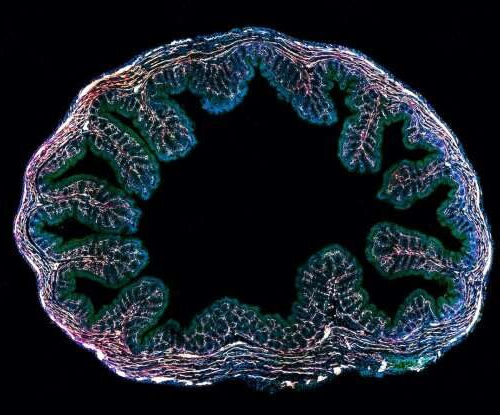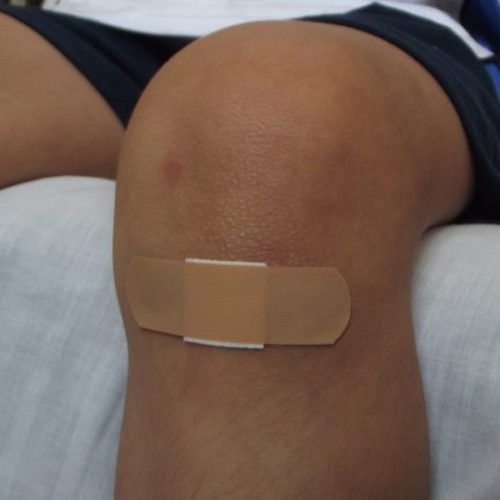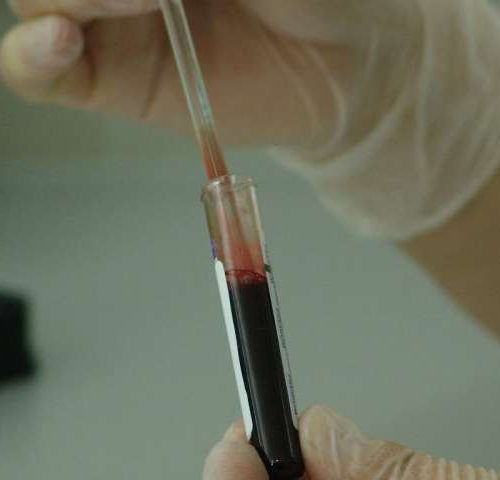Stéphanie Lavaud December 19, 2024 082 Added to Email Alert New allergens responsible for contact dermatitis emerge regularly. During the Dermatology Days of Paris 2024 conference, Angèle Soria, MD, PhD, a dermatologist at Tenon Hospital in Paris, France, outlined four major categories driving this trend. Among them are (meth)acrylates found in nail cosmetics used in salons or...
Tag: <span>allergic</span>
A single-cell atlas of nerve cells in the gut reveals web of connections
by Karen Zusi, Broad Institute of MIT and Harvard Cross-section of mouse tissue expressing GFP (green) in all ENS nuclei, and tdTomato (red) in all ENS cells (neurons and glia). The section is also stained with DAPI (blue) to mark all nuclei and an anti-TUBB3 antibody (white) to mark all neurons. Credit: Eugene Drokhlyansky, Chris...
Asthma and allergies more common in teens who stay up late
EUROPEAN LUNG FOUNDATION Teenagers who prefer to stay up late and wake later in the morning are more likely to suffer with asthma and allergies compared to those who sleep and wake earlier, according to a study published in ERJ Open Research. [1] Asthma symptoms are known to be strongly linked to the body’s internal...
Many antibiotic substitutions for self-reported penicillin allergies likely unnecessary
by Brian Burns, Massachusetts General Hospital Hospitalized patients who report an allergy to penicillin are often prescribed alternative antibiotics for infection that can be harmful, even though diagnostic testing or evaluations would show that the vast majority of these reported allergies could be disproven, according to researchers from Massachusetts General Hospital. In a national study...
Anaphylaxis-preventing pill offers new hope for severe allergy sufferers
By Rich Haridy June 07, 2020 Promising new research from Northwestern University is reporting progress in the development of an anaphylaxis-preventing pill. The drug, initially designed as an alternative to chemotherapy for some types of cancer, could hypothetically be taken before meals to prevent serious allergic reactions. BTK inhibitors are relatively new drugs, originally designed...
Exploring the frontiers of immunity and healing
During a 1989 lecture at the Cold Spring Harbor Symposium on Quantitative Biology, Yale School of Medicine professor Charles Janeway, MD, hypothesized the existence of an innate immune system and special receptors on immune cells (currently known as toll-like receptors) that trigger the body’s response to infection. Janeway’s research later confirmed his insights, providing the...
Nasal smear as an allergy screening test
by Technical University Munich 130 million people in Europe suffer from hay fever and other forms of allergic rhinitis. Until now, these conditions have typically been diagnosed using blood samples or skin prick tests. The latter method is often seen as particularly uncomfortable because the skin is exposed to various allergens and punctured with a...
Salt could be a key factor in allergic immune reactions
Atopic dermatitis: Elevated salt concentrations in affected skin TECHNICAL UNIVERSITY OF MUNICH (TUM) Salt apparently affects allergic immune reactions. A team working with Prof. Christina Zielinski at the Technical University of Munich (TUM) has demonstrated in cell cultures that salt leads to the formation of Th2 cells. These immune cells are active in allergic conditions such as...
The irresistible CCL17
Researchers at the University of Bonn discover a new role for the allergy driver: It influences signal transmission in the brain The chemotactic protein CCL17 attracts immune cells to where they are currently needed. Doctors have long known: A high level of this substance in the body indicates an allergic reaction. A team of scientists led...
Cellular changes lead to chronic allergic inflammation in the sinus
Chronic rhinosinusitis is distinct from your average case of seasonal allergies. It causes the sinuses to become inflamed and swollen for months to years at a time, leading to difficulty breathing and other symptoms that make patients feel miserable. In some people, this condition also produces tissue outgrowths known as nasal polyps, which, when severe...





